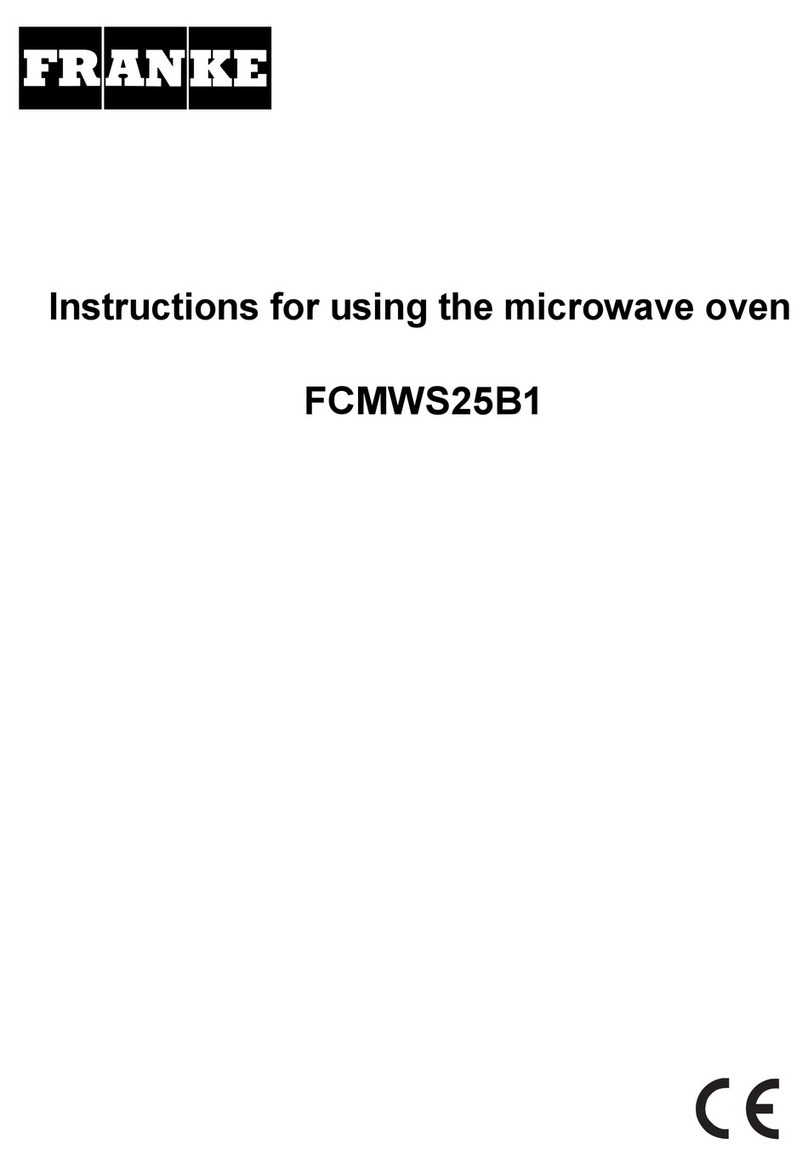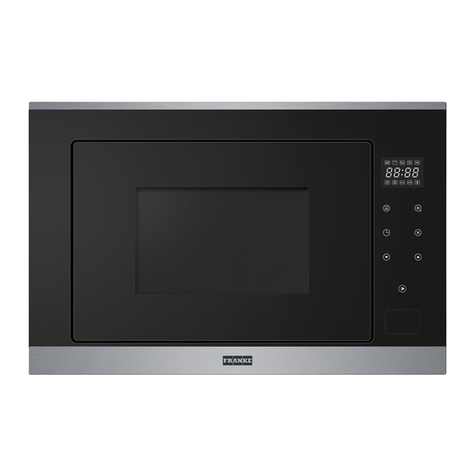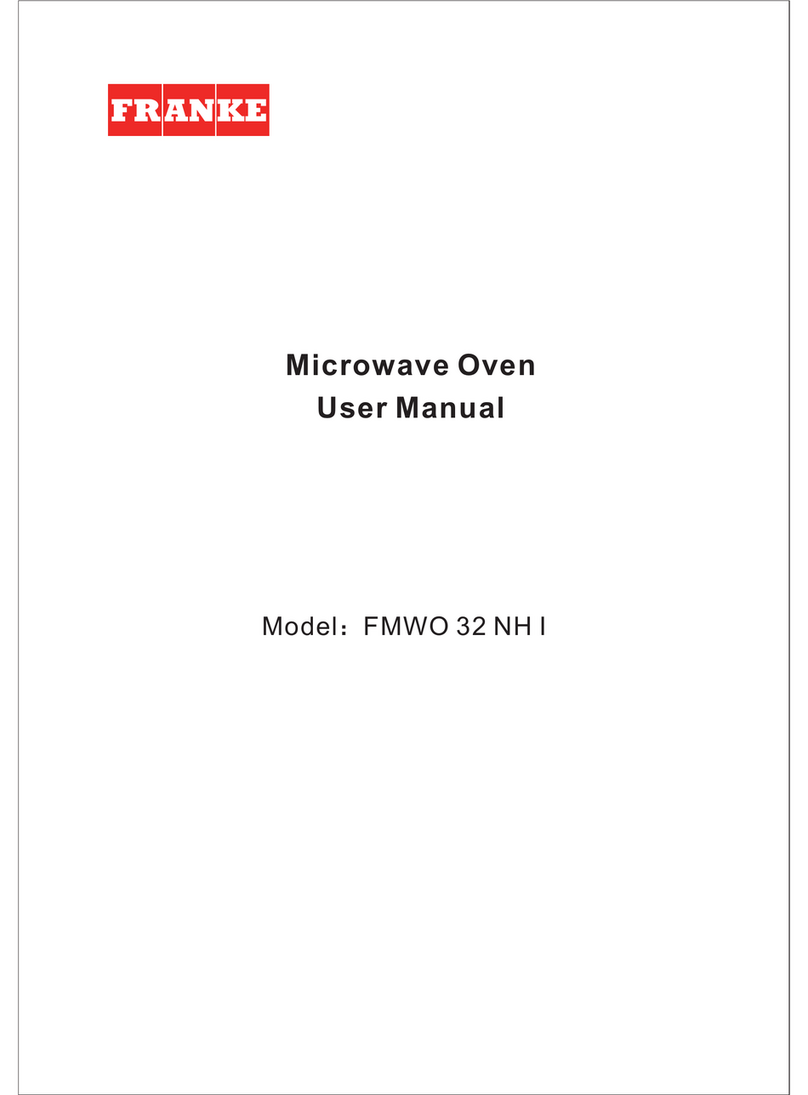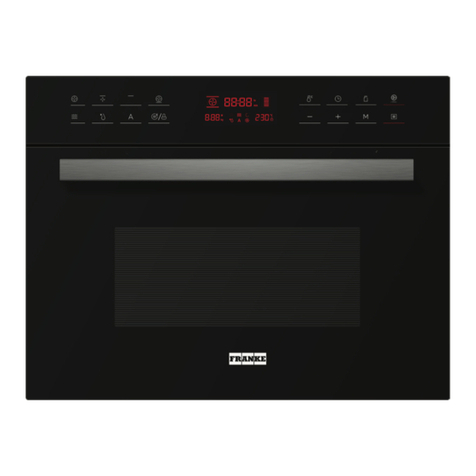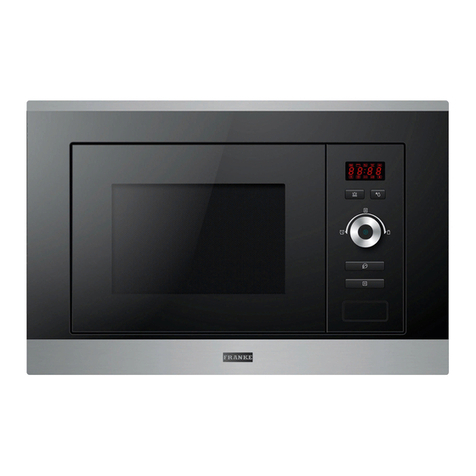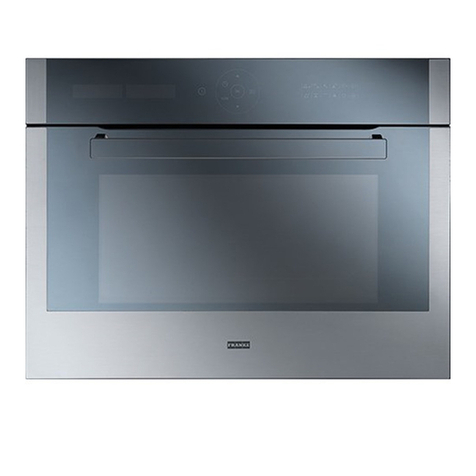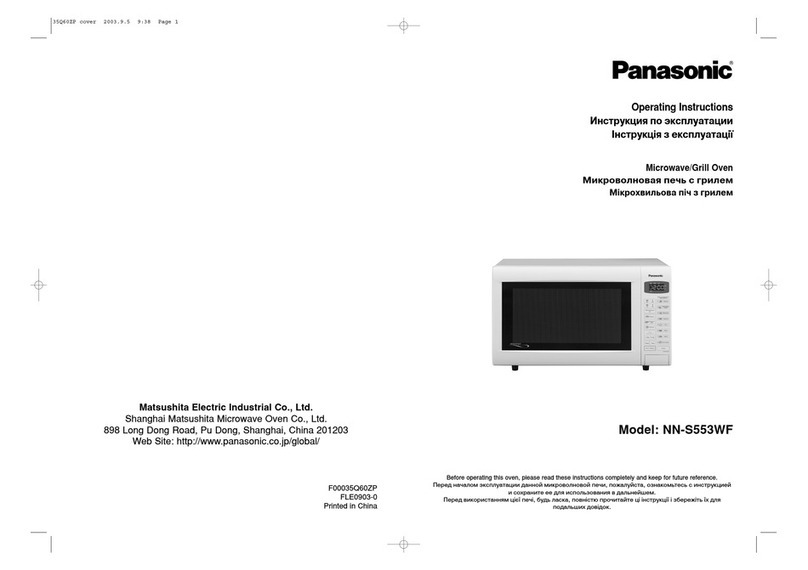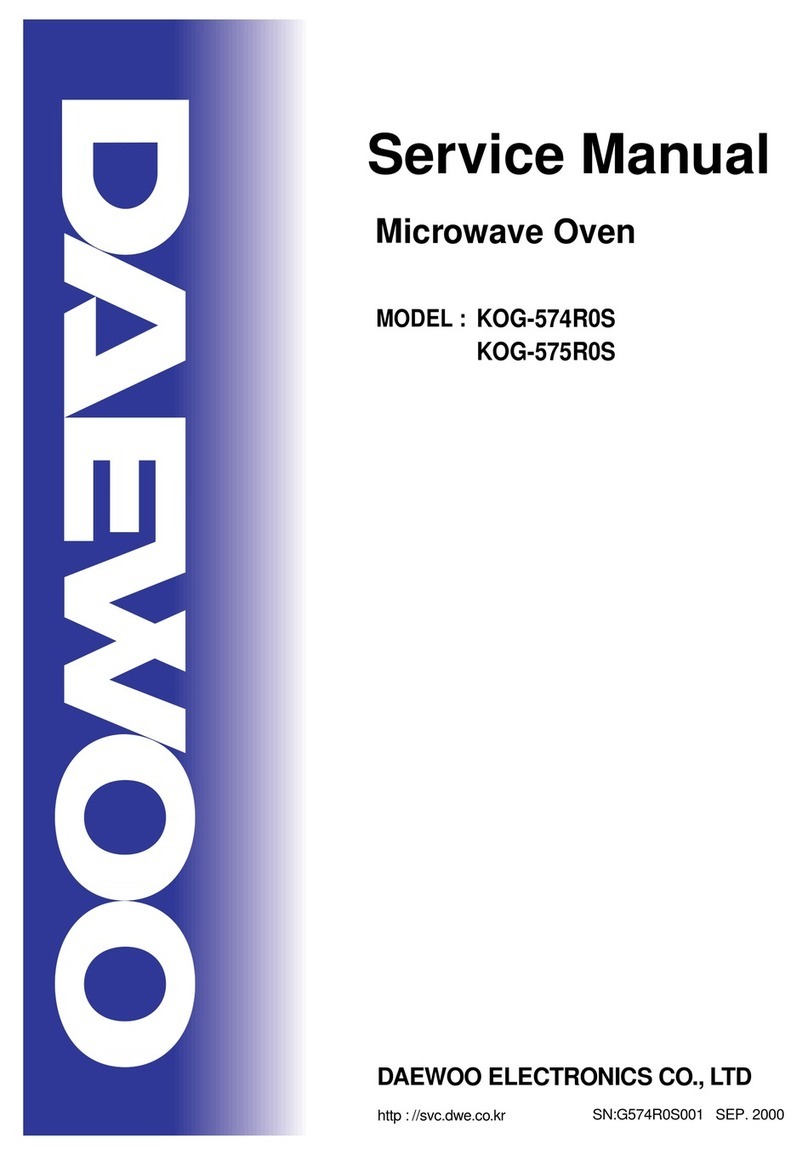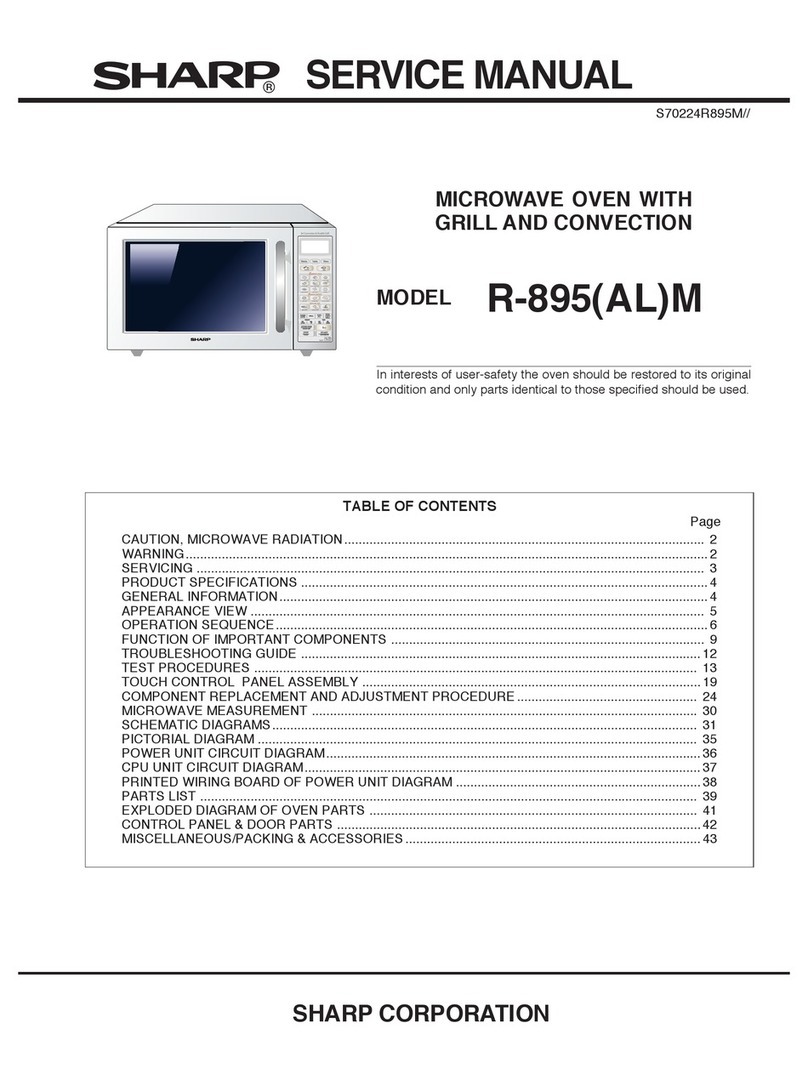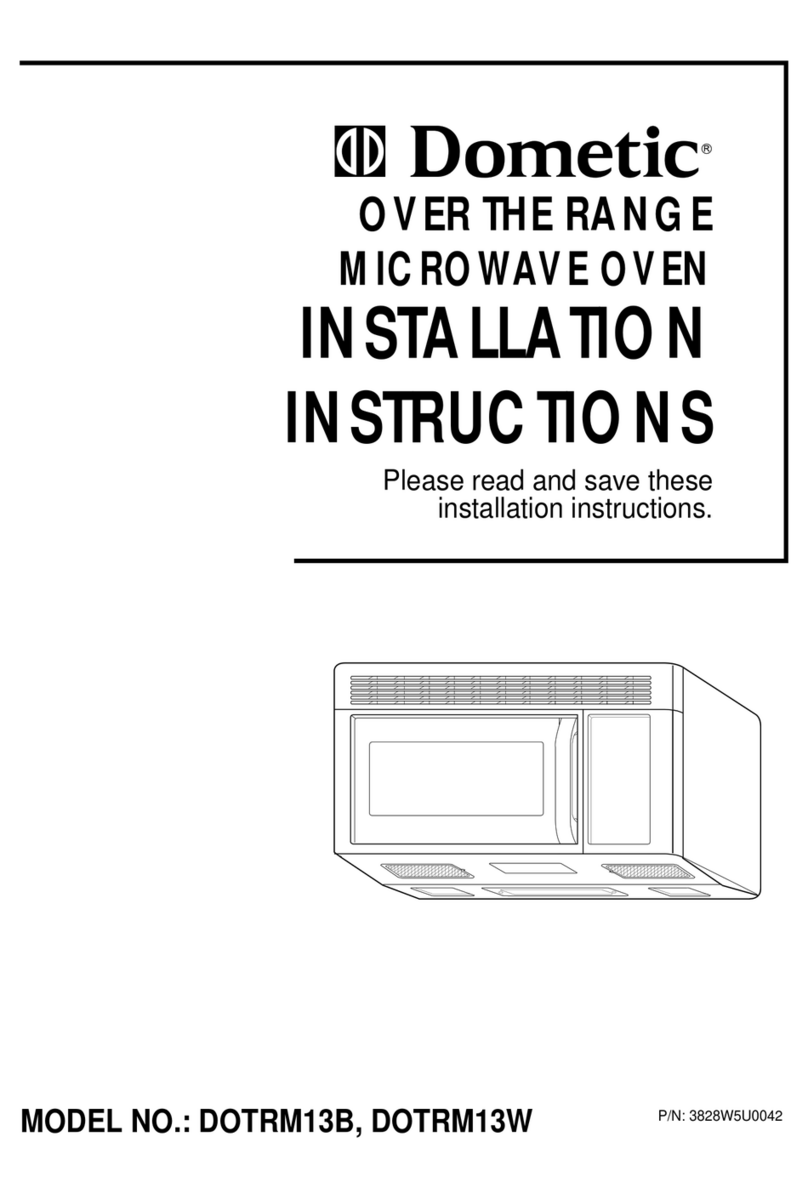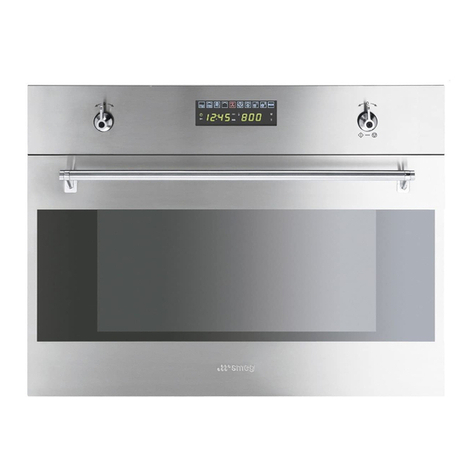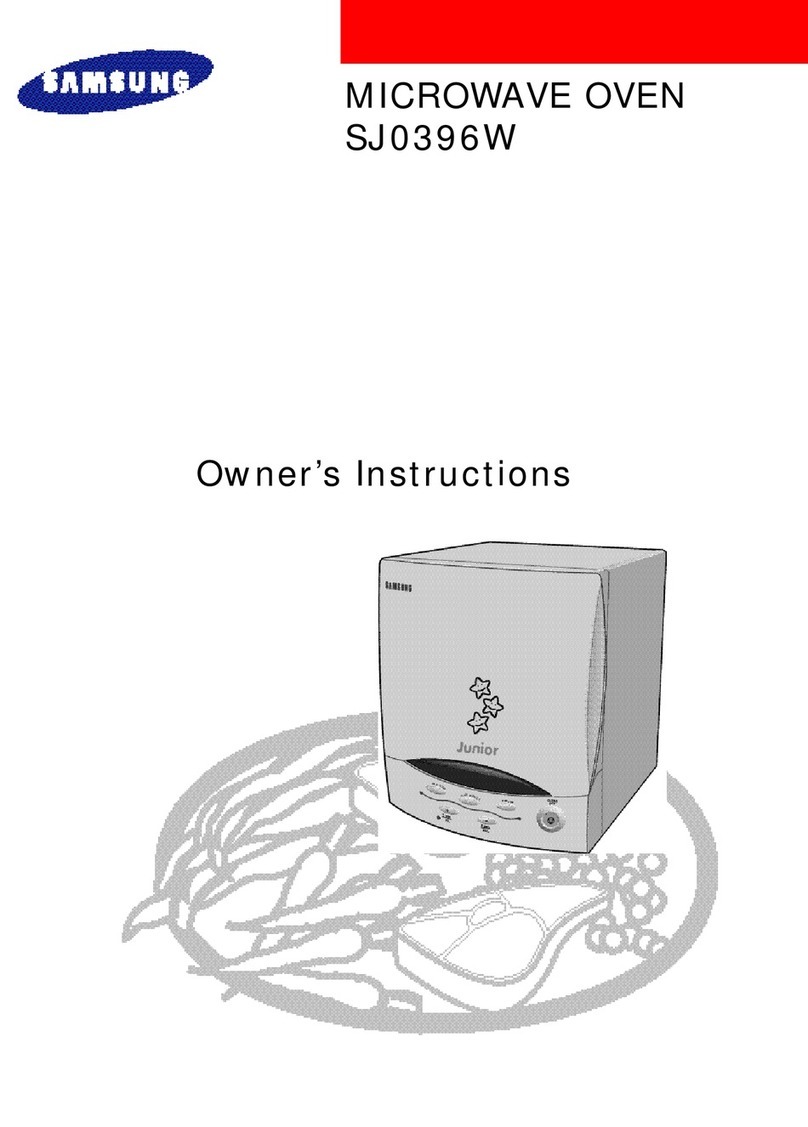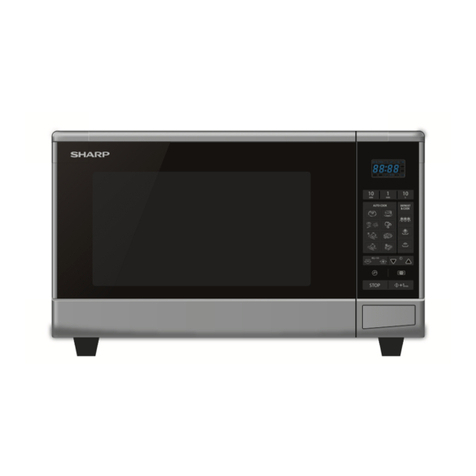
- The rear of the appliance must be placed against a wall.
Note: The oven cannot be used if:
- the door is not closed properly;
- the door hinges are damaged;
- the contact surfaces between the door and the front of the oven are damaged;
- the window in the door is damaged;
- electric arcs occur frequently inside the oven, despite the fact that no metal objects
are inside;
The oven may only be used again after it has been duly repaired by a technician from
the Support service.
- Do not switch the oven on if there is no turntable support, turntable ring or
corresponding plate in place;
-Never switch the microwave on while it is empty; if there is no food in the oven,
an electric overload may occur, which may damage the oven;
- Do not cover or obstruct the ventilation openings;
- Before placing plates and containers in the microwave, make sure they are suitable
(refer to the paragraph on plate types);
-Do not remove the “mica” sheet on the right-hand side of the oven! This sheet
captures grease and food particles which could damage the microwave generator.
- Do not place any flammable item inside the oven as, when it is switched on, it may
start burning.
- Do not use the oven as a larder.
- Do not use the oven to fry food, because it is impossible to adjust the temperature of
the oil heated in a microwave.
-To avoid the risk of burns, always wear oven gloves while holding plates and
containers and touching the oven.
-Do not lean on the open oven door. The oven may be damaged, around the
hinged area in particular.
